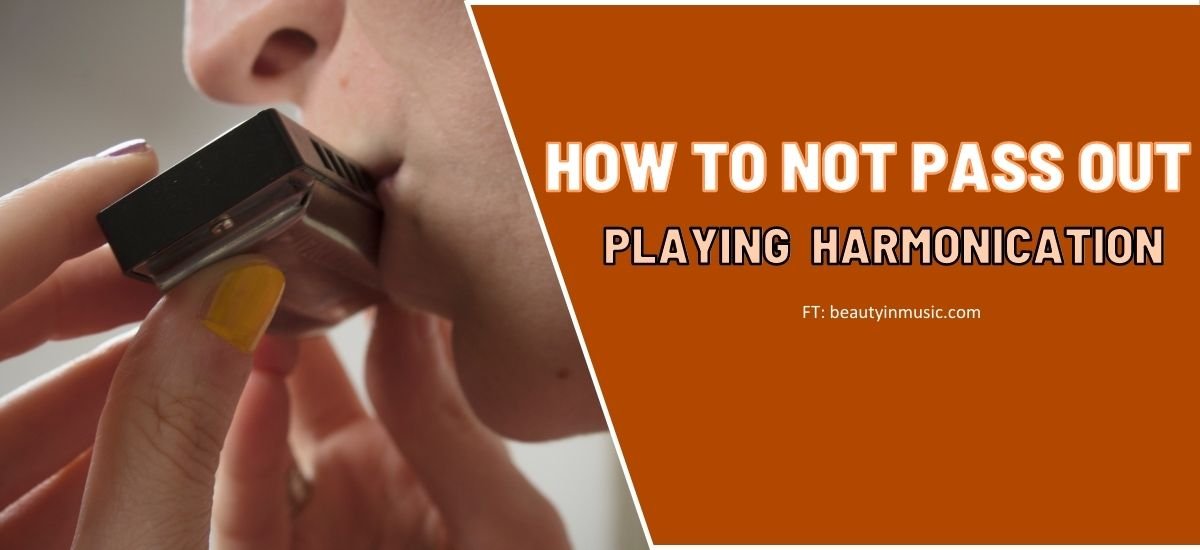When buying your first harmonica, there are many factors to consider, such as the number of holes and the difficulty level. How do you know what to look for to avoid ending up with a harmonica that leaves you out of breath? This guide will help you select the best harmonica to keep you entertained without any unwanted surprises.
How to Avoid Passing Out While Playing the Harmonica
For beginners, starting with a diatonic harmonica in the key of C is ideal. Diatonic harmonicas are designed for single-note melodies and simple chords, making them perfect for those new to the instrument.
If you find it difficult to control your breath, you might want to try a chromatic harmonica. Chromatic harmonicas have slide buttons that allow you to play all notes in a scale, making them suitable for more complex melodies and solos. However, they can be more challenging to play, so practice is essential before performing in public.
Additionally, consider whether you prefer using your mouth or nose for breathing while playing. Some find it easier to produce the right sound by breathing through their nose rather than their mouth, but this varies from person to person. For convenience, consider buying a pocket harmonica that fits easily in your pocket for on-the-go practice.
No matter which type of harmonica you choose, remember that learning to play takes time and patience. Practice regularly and be patient with yourself!

Factors to Consider When Choosing a Harmonica
- Music Genre: Decide what kind of music you want to play. Different harmonicas are better suited for different genres.
- Skill Level: Identify your skill level. Beginners may prefer simpler models, while more advanced players might seek harmonicas with greater versatility.
- Portability: If you plan to take your harmonica with you, consider a pocket-sized model.
- Breathing Technique: Decide if you prefer mouth or nose breathing. Experiment to find what works best for you.
Steps for Diaphragmatic Breathing
Diaphragmatic breathing is crucial for playing the harmonica effectively. It involves using your diaphragm to fill your lungs with air, which is more efficient than regular chest breathing.
- Breathe In Through Your Mouth: Air travels down your throat to your lungs, increasing air pressure and contracting the diaphragm. This pulls on the ribs, raising the chest cavity and drawing air into the lungs.
- Avoid Sucking In Air: Proper breathing uses the diaphragm to pull air into the lungs, rather than sucking it in.
- Time Your Breaths: Find a comfortable position, either sitting or lying down. Place one hand on your stomach and the other on your chest. As you inhale, push your stomach out while keeping your chest still. Exhale slowly, feeling your stomach fall.
- Control Your Airflow for Long Notes: To sustain long notes, use your diaphragm to control the airflow. Relax your shoulders, place your hand on your stomach, and inhale by pushing your stomach out. Exhale by pulling your stomach in.
Practicing these steps will help you avoid passing out and improve your ability to play the harmonica.

Comparing Diaphragm Breathing to Regular Breathing
- Diaphragm Breathing: Uses the full capacity of the lungs, engaging the diaphragm, and bringing in more air. It requires conscious effort and involves the stomach rising and falling.
- Regular Breathing: Uses only a portion of the lungs, with the chest and shoulders predominantly moving. It brings in less air and happens naturally without conscious effort.
| Diaphragm Breathing | Regular Breathing |
| Deep breathing | Shallow breathing |
| Uses full capacity of lungs, engaging diaphragm | Does not use the full capacity of lungs |
| Brings in more air | Brings in small amounts of air |
| The stomach will rise and fall | Predominantly shoulders and chest that move |
| Requires conscious effort | Happens naturally |
What Makes Harmonica Difficult To Play?

Why Is the Harmonica Difficult to Play?
Playing the harmonica can be challenging for several reasons:
- Close Hole Placement: The holes are very close together, making it easy to cover the wrong one with your finger.
- Air Requirement: Playing requires a lot of air, which can make you lightheaded if you’re not used to it.
- Delicate Reeds: The reeds can be easily damaged if played too hard.
- Fast-Paced Music: Harmonica music is often fast-paced, requiring quick and precise movements.
- Tongue Placement: Certain notes require specific tongue positions, adding to the complexity.
Types of Harmonicas
- Diatonic Harmonicas: Typically have 10 holes and are easier for beginners.
- Chromatic Harmonicas: Have 12 holes and offer more versatility but are more challenging to play.
- Tremolo Harmonicas: Have 13+ holes and provide unique rhythms.
Why Does Playing Harmonica Make Us Feel Dizzy?
Playing the harmonica can make you feel dizzy due to:

- Mouth Suction: Creates suction that pulls blood away from the brain.
- Bending Over: Causes blood to pool in the legs.
- Low-Frequency Vibration: The vibrating reeds create a sound that can disrupt balance.
To avoid dizziness, try sitting upright or standing straight with your back against a wall.
Playing Harmonica with a Guitar
You can also play the harmonica while playing the guitar. Here are some tips:
- Use a Good Quality Harmonica: Choose a harmonica that suits your style and is durable.
- Start with a Lower Key Harmonica: It will be easier on your voice and simpler to play.
- Experiment with Techniques: Try different pressures and vibrato to create unique sounds.
Frequently Asked Questions
- How Should I Breathe When Playing the Harmonica?
- Take deep breaths to get more air into your lungs. Hold the harmonica in your mouth and blow into it. If you feel lightheaded, take a break and drink some water.
- Do You Breathe When You Play the Harmonica?
- Yes, controlling your breathing is crucial for playing the harmonica. Ensure you have enough oxygen to avoid passing out.
- What Should I Consider When Buying My First Harmonica?
- Consider the type of music you want to play, your budget, and the size of the harmonica. Decide whether you want a chromatic or diatonic harmonica based on your needs.
Conclusion
Choosing and playing a harmonica involves considering the type of music you want to play, your skill level, and your preferred breathing technique. Diaphragm breathing is essential for efficient playing and avoiding dizziness. Whether you choose a diatonic, chromatic, or tremolo harmonica, practice and patience are key to mastering the instrument.
For more tips and guides on music and instruments, explore our website and share your experiences in the comments section. Thank you for reading!
Read More:- What Is Rhythm In music?

